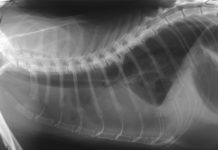Do your cat have lice? It is actually a normal happenstance for cats to have these insects in their fur or coat. However, having an infestation of them is another thing. You need to know if it is already a call for concern or not. Give this article a read and get to learn about lice in cats and more!
Lice in Cats: What should you know?

Lice, as we know, are small, wingless insects which live in the feathers, furs, or hairs of animals and people. Most of the lice are of the chewing or biting type. This includes the cat louse. Lice in cats are most frequently seen on the older, long-haired cats, which are no longer able to groom themselves. Due to the widespread use of monthly tick and flea preventive treatments, the infestations of lice are now rare in dogs and cats. When it is seen, the infestations are commonly seen on feral, stray, debilitated, or shelter animals.
The lice live within the environment that’s provided by the hair and the skin. They tend to move from a host to another by way of direct contact. In various temperate regions, lice are most common to see during the colder months and not easy to find in the summer season. Most of the chewing lice have some definite preferences based on their hosts: they may often live on just one species or several closely in relation species.
Moreover, lice in cats aren’t as common as the ticks and fleas, and they might not be transferred in between different species. Nonetheless, the mere presence of the lice might lead to full infestation, tapeworm incursion, as well as some other problems when you leave it without any treatment.
The lice that affect cats aren’t the same kind of lice that affect humans. However, they may still cause some irritation though chewing on the skin or sucking the cat’s blood. Furthermore, you might also notice the cat scratching or biting the area, which has already been affected by the lice. These areas may include the head, anus, tail, groin, shoulders, and ears. Further, the fur of the cat might also become matted because of the excessive scratching.
Causes of Lice
There’s just one species of lice that infest cats –the Felicola Subrostrata. Lice might not be transferred from a certain species to another, but there are some situations which may lead to the transfer of this prickly condition from a cat to another.
- Contact with the possessions of another cat with lice on its body
- Contacts with other cats that suffer from lice
- Inability to clean itself for some reason
- Living in an unhygienic situation
Symptoms of Lice
You may effortlessly spot lice in cats through parting the hair and searching for nits, eggs, or mature lice on the skin. Furthermore, there is also a probability that you may see the lice moving into the fur. Some other symptoms of lice in cats may include:
- Small brown or white spots on the skin and fur
- Matting or hair loss
- Excessive scratching or biting
Prognosis of Lice
The presence of lice may be confirmed through the inspection of the fur of the cat for some small brown or white spots, which indicate adult or immature lice or eggs. A vet may give an official diagnosis and may rule out some other conditions like allergies, ticks, and fleas.
You might also expect that your vet will ask some questions regarding the cat’s medical history, as well as some other symptoms, like excessive scratching. Moreover, your vet may also diagnose the lice through parting the fur in order to look for the lice that may commonly be seen moving or feeding on the body. Further, they may also search for nits so that they might recommend the best form of treatment for the cat.
The vet might diagnose the kind of lice by placing the lice and nits under a microscope. The cat might also be suffering from sucking or biting lice. Both of which may cause irritation when they get to feed on the body. The chewing lice has huge mouthparts, while the sucking ones has narrow mouth.
Treatments for Lice

There are actually a wide variety of shampoos and insecticidal powders and sprays that are efficient in killing the lice. Additionally, products like selamectin and fipronil may also be used. It might also be essential to treat the cat more than once, in order to kill the emerging nits while they are still hatching. You also need to follow the instructions of your vet thoroughly, as the products used in killing lice may be harsh on some breeds of cats.
In the circumstances where the fur of the cat is matted badly, it might be essential to shave the fur to make sure that it gets deeper to kill lice and nits.
In order to prevent any reinfection, dispose or wash all the cat’s bedding and thoroughly clean all the places the cat spends time with. Some of the items, which can’t be laundered or washed might be sealed securely in plastic containers for several weeks. You may also do some disinfecting all the things your cat uses to get rid of any infections.









